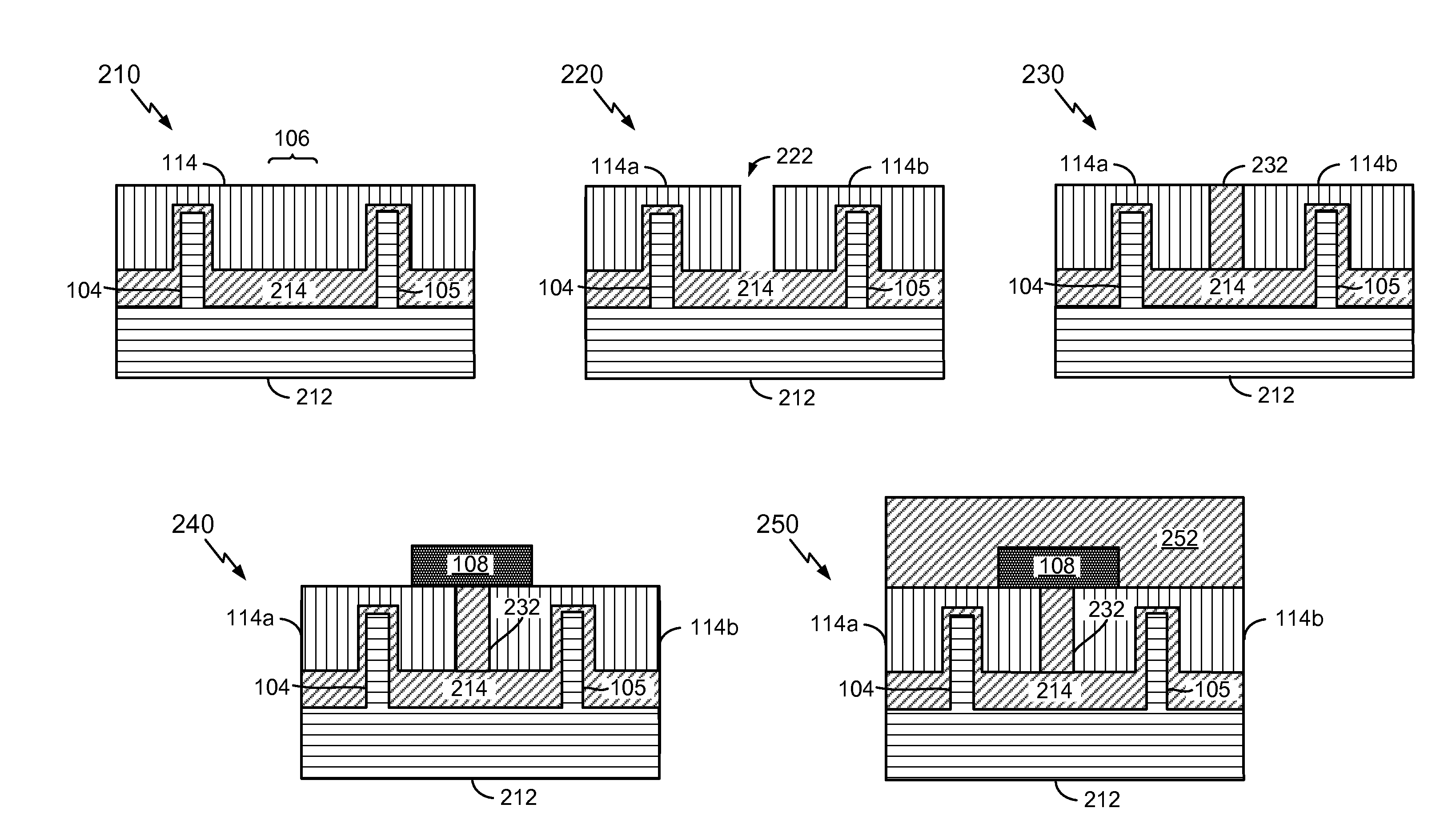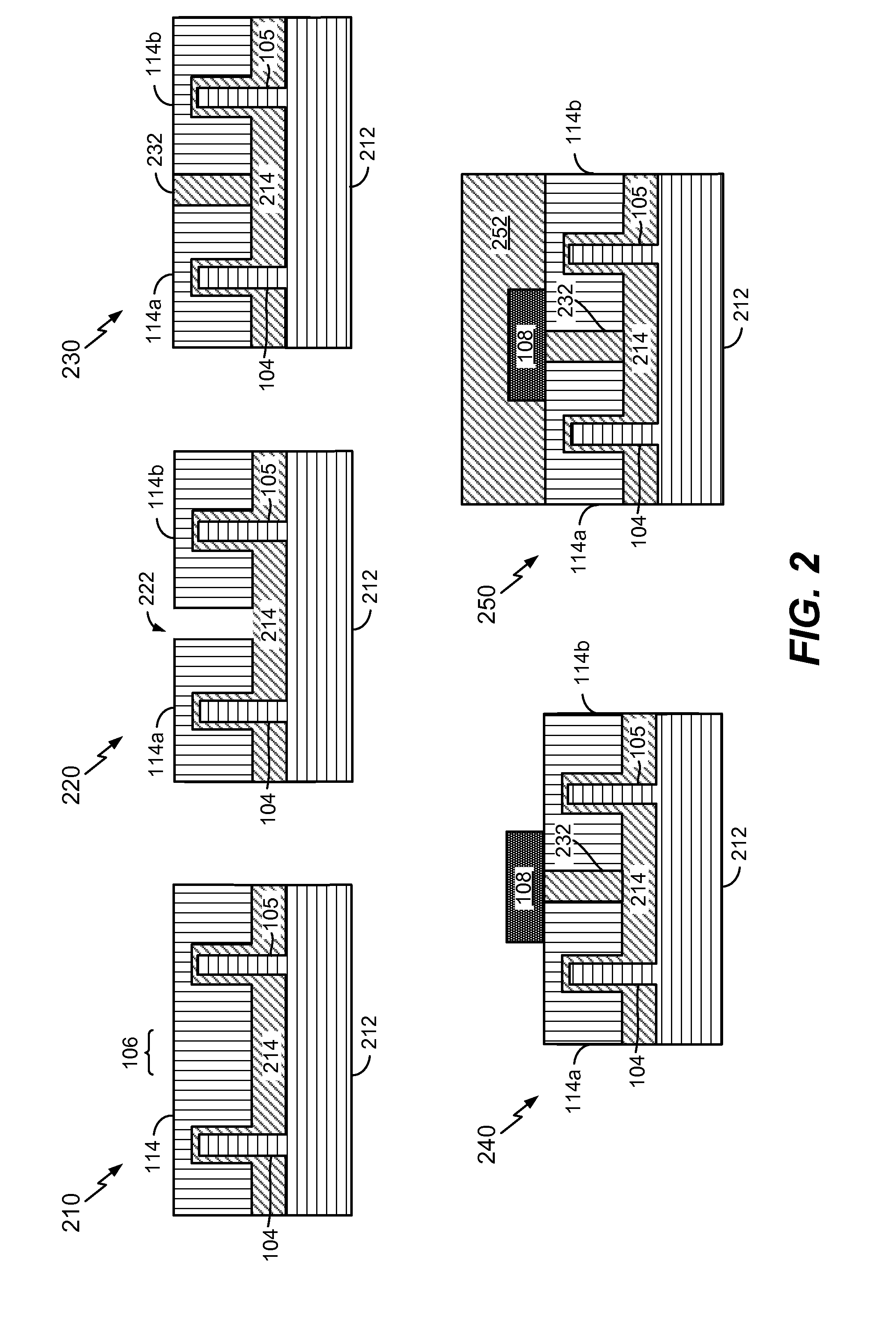Device and method to connect gate regions separated using a gate cut
- Summary
- Abstract
- Description
- Claims
- Application Information
AI Technical Summary
Benefits of technology
Problems solved by technology
Method used
Image
Examples
Embodiment Construction
[0018]Certain examples are described below with reference to the drawings. In the description and the drawings, similar or common features may be indicated by common reference numbers.
[0019]FIG. 1 depicts a layout view of an illustrative example of a device 100. The device 100 includes multiple gate lines, such as a first gate line 114 (e.g., a structure used to form multiple transistor gate regions). The device 100 may also include a second gate line 112 and a third gate line 116. The gates lines 112, 114, and 116 may include polycrystalline silicon (polysilicon or poly-Si) or metal, such as titanium nitride (TiN), tungsten (W), aluminum (Al), etc. The device 100 further includes multiple fins, such as a fin 104 and a fin 105. For example, the fins 105, 104 may be defined from a substrate (e.g., a silicon substrate) of the device 100 by etching the substrate.
[0020]Multiple devices (e.g., transistors) may be formed using a single gate line of the device 100. For example, two transis...
PUM
 Login to View More
Login to View More Abstract
Description
Claims
Application Information
 Login to View More
Login to View More - R&D
- Intellectual Property
- Life Sciences
- Materials
- Tech Scout
- Unparalleled Data Quality
- Higher Quality Content
- 60% Fewer Hallucinations
Browse by: Latest US Patents, China's latest patents, Technical Efficacy Thesaurus, Application Domain, Technology Topic, Popular Technical Reports.
© 2025 PatSnap. All rights reserved.Legal|Privacy policy|Modern Slavery Act Transparency Statement|Sitemap|About US| Contact US: help@patsnap.com



